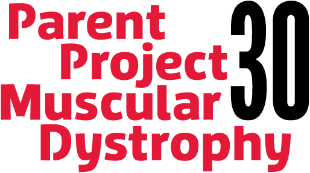
ReveraGen BioPharma, with the Cooperative International Neuromuscular Research Group (CINRG), conducted an international clinical trial of vamorolone at 11 CINRG sites in 6 countries (US, Canada, Australia, Israel, UK, and Sweden). ReveraGen reports that the study showed dose-related improvements of multiple function tests of strength and endurance. PPMD is pleased to learn this news and we look forward to learning more from Dr. Eric Hoffman at this week’s Annual Conference. Remember, if you are unable to attend, Dr. Hoffman’s presentation (as well as dozens of others) will be streamed live, Thursday through Saturday.
ReveraGen’s Update:
Vamorolone (VBP15) Top Line Data Shows Improvements in Strength and Endurance in Boys with Duchenne Muscular Dystrophy
[Rockville MD – 26 June 2018]ReveraGen BioPharma, with the Cooperative International Neuromuscular Research Group (CINRG), conducted an international clinical trial of vamorolone at 11 CINRG sites in 6 countries (US, Canada, Australia, Israel, UK, and Sweden).
This was an open-label, sequential dose-ranging study evaluating 4 dose levels (0.25, 0.75, 2.0, and 6.0 mg/kg/day) of vamorolone in 48 boys with DMD, 4-7 years old. The initial two-week treatment period was followed by a 6-month extension at the same dose levels (clinicaltrials.gov; NCT02760264, NCT02760277).
The study showed dose-related improvements of multiple function tests of strength and endurance. Clinical efficacy was demonstrated at the 2 mg/kg/day and the 6 mg/kg/day vamorolone doses compared to data from untreated patients in the CINRG Duchenne Natural History Study and was of similar magnitude to that seen in prednisone-treated patients in the historical CINRG prednisone trial.
Vamorolone exhibited limited metabolic disturbance and bone turnover change at doses of 2.0 or 6.0 mg/kg/day.
In animal models of DMD, vamorolone was shown to be a dissociative steroid. It displayed less side effects than traditional steroids and was superior for muscle strength and membrane stabilization, two key efficacy aspects specific for DMD therapy.
“These early clinical data are encouraging,” said Paula Clemens, MD, Professor of Neurology at the University of Pittsburgh School of Medicine, Study Chair, and Medical Director of the CINRG group. “We are grateful for the participation of patients and their families, and we owe a great deal of the success of the program to their efforts,” she continued.
“The side effects of anti-inflammatory steroids often detract from patient quality of life, particularly in children,” noted Eric Hoffman, PhD, Professor of Pharmaceutical Sciences at Binghamton University – SUNY and CEO of ReveraGen BioPharma, the clinical trial Sponsor. “The potential of vamorolone to reduce this burden may improve the quality of life of children with DMD and their families,” he said. Adverse effects were measured in the trial.
Vamorolone has been developed under a venture philanthropy model, with funding from a dozen international non-profit foundations, as well as US and EU governments. “The National Center for Advancing Translational Sciences — NCATS — at the National Institutes of Health partnered with ReveraGen to aid in vamorolone’s pre-clinical development,” Hoffman said. “Clinical trial support from National Institute of Neurological Disorders and Stroke – NINDS – made the DMD trials possible.” Joel Wood, President, Foundation to Eradicate Duchenne, noted, “I have personally seen both the good and the ugly of steroids; the potential for having a safer alternative is a major step forward for our families.”



 by: Parent Project Muscular Dystrophy
by: Parent Project Muscular Dystrophy

